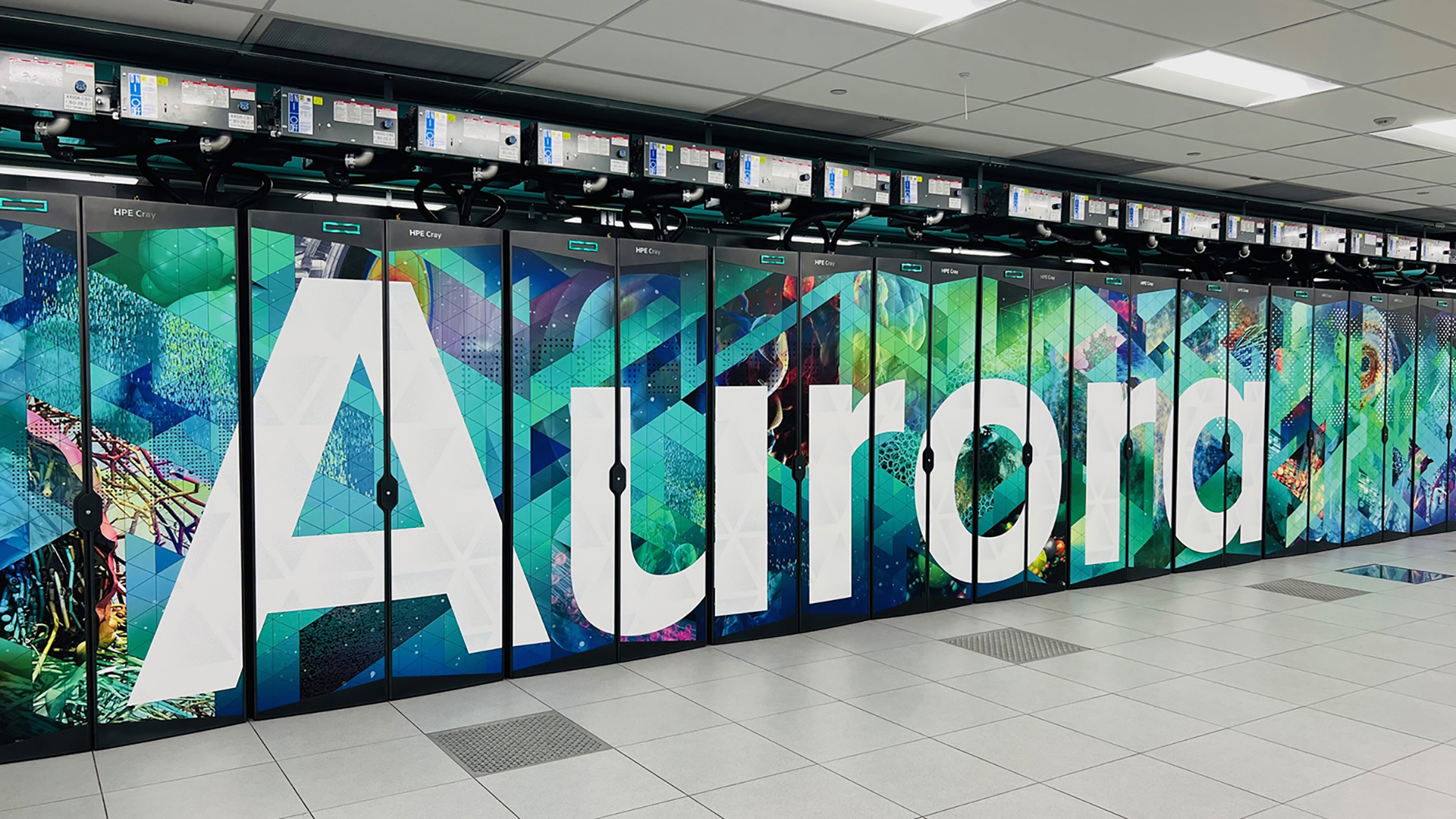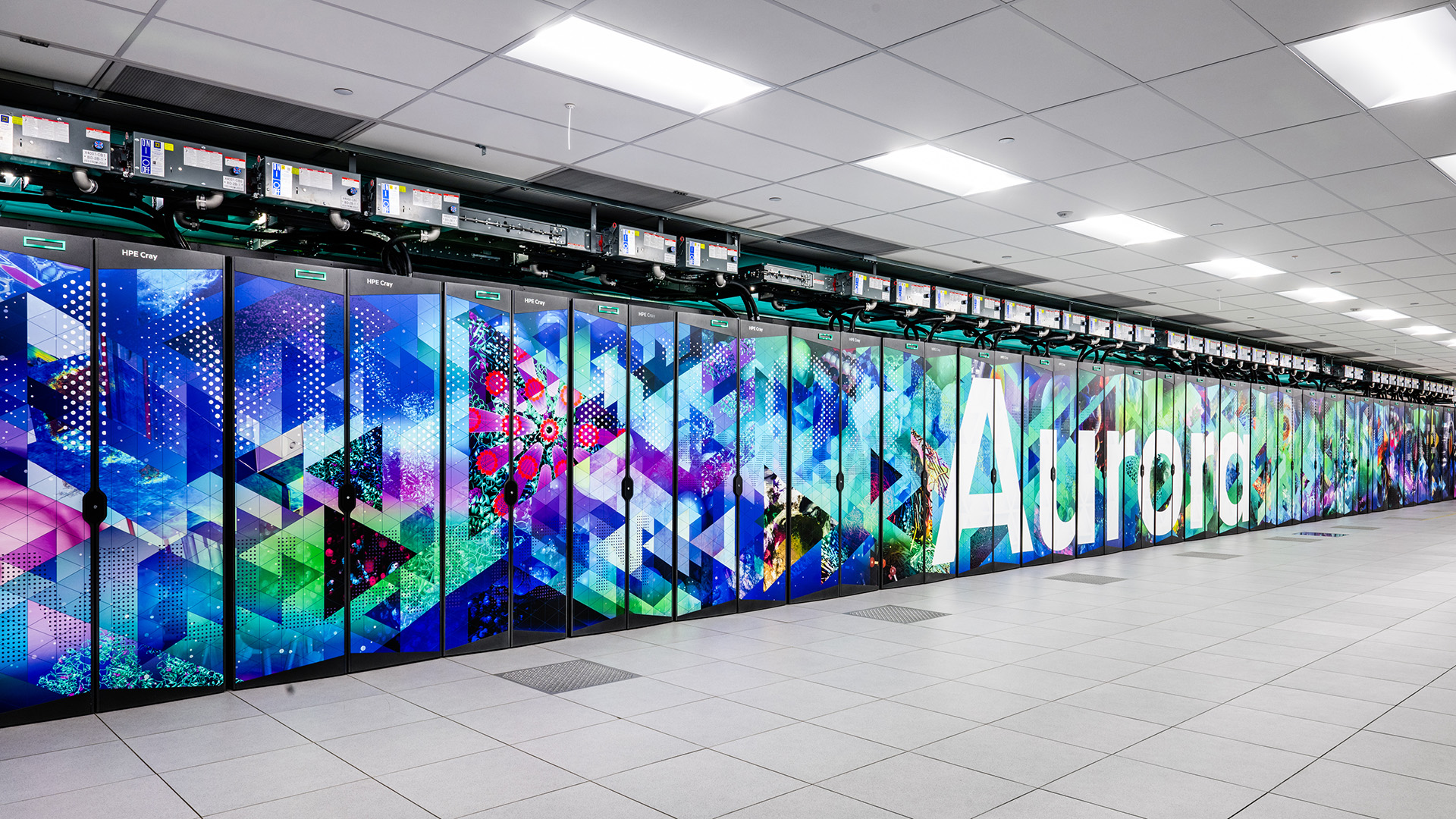From Circuits to Scale: Intel’s Path to Exascale
As the Aurora Supercomputer reaches its ceremonial opening, three of Intel's team members reflect on the unique scope and challenges of the project.
Few moments in engineering are as electrifying as powering up a brand-new supercomputer for the first time. For the Intel team behind the Aurora Supercomputer, seeing the first production blade light up in Intel’s JF5 lab in Oregon marked just such a milestone: A mix of excitement, anxiety and profound pride.
“Seeing that initial rack and blade was more than hardware coming alive; it was the first glimpse of what would become a historic machine,” recalls Olivier Franza, Aurora principal investigator and chief system architect.
Bill Wing, Intel’s Aurora lead program manager, remembers watching the first exaflop run with the team as a moment punctuated by cheers as Aurora climbed the ranks of global supercomputing.
Aurora isn’t just a machine, it’s a marvel. Capable of performing two billion billion calculations per second, it’s a true exascale system. This leap in computational power enables breakthroughs across science and technology, from climate modeling to cancer research. As Franza puts it, “Aurora is a phenomenal research engine that allows us to model complex physics and push scientific frontiers like never before.”
This potential is already being realized through efforts like the Trillion Parameter Consortium, where Aurora is helping advance large-scale AI models including AuroraGPT, a groundbreaking model aimed at accelerating scientific discovery in partnership with national labs. These initiatives highlight the convergence of high performance computing (HPC) and AI, and how systems like Aurora are at the forefront of shaping the future.
Building a system of this scale, however, posed unprecedented challenges. “We relied on every best practice we knew,” Wing reflects. “But only when you assemble all the hardware and software at scale do the real challenges emerge.”
Intel had never tackled a project of this magnitude. Transparency and collaboration with partners like Argonne National Laboratory and HPE proved critical. “Becoming a systems company is tough,” Franza admits. “But Aurora challenged us to evolve.”
From the beginning, Argonne’s input shaped every phase of Aurora’s development. “This wasn’t just about shipping technology. We listened to the customer, deeply and consistently,” Wing says. “We didn’t push back. No matter how small the issue, we worked to resolve it.”
The team embedded with Argonne researchers debugged side by side and responded to feedback with urgency and humility. That commitment to putting the customer first became one of Team Intel’s defining values. Problem-solving wasn’t a task; it was a mindset.
The journey began with Intel experimenting on custom boards and HPC clusters, learning alongside Argonne’s team. “Unlike typical Intel projects,” Wing recalls, “we worked closely with Argonne, debugging and building trust as one team.”
The road forward was anything but smooth. Delivering an exascale supercomputer required a bold new architecture with novel processor cores, high-bandwidth memory, and advanced accelerators. Architectural debates, node design trade-offs, and integration challenges were constant.
Technology challenges were exacerbated in 2019 by COVID-related supply chain disruptions. Debugging hardware in collaboration with the customer, managing thermals, and chasing elusive bugs consumed months.
Despite those challenges, Intel’s engineers persevered. “This project demanded resilience at every level,” says Wing. “We had cross-functional teams rolling up their sleeves, often working in the basement labs in Chicago for weeks at a time.”
As David Tuhy, Aurora engineering leader, put it: "Very smart and committed Intel engineers came together — hardware, software, and systems experts alike — to get Aurora to acceptance. That kind of commitment, across disciplines and despite setbacks, was what ultimately carried us across the finish line.”
Amid the difficulties, several engineering triumphs stand out. The maturation of Intel’s oneAPI and AI frameworks, refined in close partnership with Argonne, became a core strength. “OneAPI’s early hurdles turned into a critical asset,” Wing says. Integration of the open source DAOS storage platform also proved vital.
Beyond the technical achievement lies a deeply human story. This decade-long journey took an emotional toll, pushing the team beyond what they thought they could deliver. “What kept us going was team spirit, the sense of fighting alongside each other and the customer,” Franza says.
Leadership evolved to prioritize trust, communication and empowerment. Wing adds, “True leadership means standing shoulder-to-shoulder, listening, and lifting others up.”
Aurora’s impact extends well beyond hardware. This exascale powerhouse will advance discoveries in biology, energy, aerospace, quantum computing, and more. “We proved Intel could tackle tough challenges and fulfill a mission critical to the DOE and the nation,” Wing says. Franza adds, “This was about commitment, starting something and seeing it through, even amid challenges.”
For those on similar paths, the lessons are clear: never compromise on quality. Stay hands-on and connected to the system’s heartbeat. And above all, hold leadership accountable, knowing when to push forward and when to step back to protect your well-being.
Looking back, the team sees more than just a machine; they see a legacy. Aurora reshaped them as engineers, collaborators and thinkers. “No one can take away the experience of building something of this scale,” says Franza. “Even if the road was rough.”
Wing agrees: “Knowing our work will enable discoveries for generations to come is deeply rewarding.”
Aurora stands as a testament to what’s possible when imagination, expertise and dedication converge. It’s a beacon for future innovators: Proof that with courage and care, the impossible can become reality.





